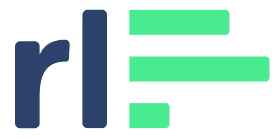The Tasks You Won’t See in Job Postings Anymore
The ability to adapt will save your job from AI

The share of AI-exposed tasks listed in job ads has fallen from 29% in early 2022 to 25.5% by early 2025, signaling a clear pullback in AI-amenable work.
Companies aren’t just shifting which roles they hire; they’re actively trimming AI-exposed duties within the jobs they continue to fill. The decline of AI-exposed tasks within-occupation accounts for 16% of the overall decline.
The deepest within-occupation cuts target core back-office functions: processing financial transactions and client insurance needs, managing insurance and tax transactions, financial compliance and tax advisory, and balance-sheet reconciliations.
As artificial intelligence rapidly evolves, its influence on the tasks companies hire for has become a critical lens through which to view how work itself is changing. Our previous newsletter examined one side of this shift: the fact that much of the drop in AI exposure in job ads was driven by companies hiring less for roles highly exposed to AI. This week, we dig into the second part of that story: the tasks that are disappearing from the job descriptions companies continue to post. Together, these findings were recently featured in Business Insider, which highlighted how automation is already reshaping demand for human labor.
Building on our previous analysis of AI exposure and adoption within companies’ existing workforces, we leverage longitudinal job posting data to understand the historical and current demand for “AI-exposed” tasks, or day-to-day activities that AI could plausibly perform.
If AI is automating or significantly augmenting certain tasks, those tasks should appear less often in job descriptions. And indeed, we observe a steady decline: AI-exposed tasks made up 29% of listed activities in early 2022, but only 25.5% by early 2025. This trend suggests that companies are embedding AI into operations not just as an add-on, but as a core driver of process redesign.


Our previous newsletter documented the hiring-mix story; here we quantify the less visible “within-occupation” piece. Roughly 84% of the drop in average AI exposure comes from shifts between roles—firms hiring fewer high-exposure occupations—while the remaining 16% stems from companies actively pruning AI-exposed duties within the roles they still fill. While 16% may seem small, it still represents thousands of individual edits to job descriptions each quarter, signaling a gradual but meaningful redefinition of day-to-day work.


Zooming in on that 16%, we identify which occupations have eliminated the largest share of AI tasks from their postings. Data and Document Clerks top the list, with the share of AI-exposed tasks in job postings dropping 8.2 percentage points between 2022 and 2024 as firms automate record-keeping, indexing, and routine data retrieval. Business Executive Leaders and Shift Operations Supervisors follow close behind, reflecting how leadership and managerial roles are refining job scopes to focus on strategy and oversight rather than hands-on process work. Aerospace Maintenance Technicians and Technical Sales Consultants round out the top five, suggesting that automation’s reach extends to specialized technical and customer-facing workflows as well.


To understand what is being cut, we drill into which tasks specifically experienced the most decline in demand within those high-change occupations. Core back-office functions dominate the list, including processing financial transactions and client insurance needs, managing insurance and tax transactions, and financial compliance and tax advisory services. Balance-sheet reconciliations and other account-management duties also saw double-digit declines, underlining that rule-based, repetitive tasks remain prime targets for AI and robotic process automation. These edits suggest hiring managers are recalibrating roles to emphasize judgment, client engagement, and exception handling over routine data work.


When we look across industries at those trimming the most AI-exposed tasks inside the jobs they still hire for, Marketing and Advertising Services leads the pullback with just over a two-point drop, followed closely by Food and Hospitality. Automation Solutions and Design and Printing Services are next, with Commercial Aviation, Consumer Tech Distribution, Energy and Resources, Healthcare and Wellness, Human Resources Services, and Wellness Products all dialing back routine, process-driven duties. These cuts suggest that campaign execution, reservation flows, basic automation design, and similar tasks are being pared down, potentially as they become aided or augmented by AI platforms.


By focusing on within-occupation shifts in labor demand, these results reveal exactly which day-to-day activities are being automated or de-emphasized within the roles that companies still choose to fill. While the hiring-mix story captures which jobs firms pursue, the within-occupation view opens a window onto how work itself is being reimagined in the age of AI. In this way, tracking postings gives us a live, ground-level view of how organizations are reshaping job content and the very nature of work in the age of AI, well before those changes show up in employment statistics.


